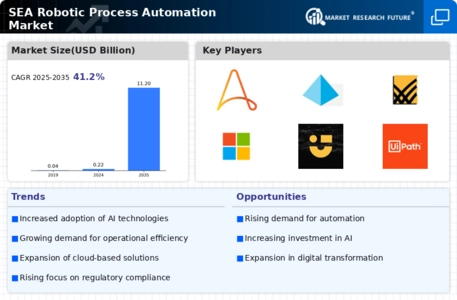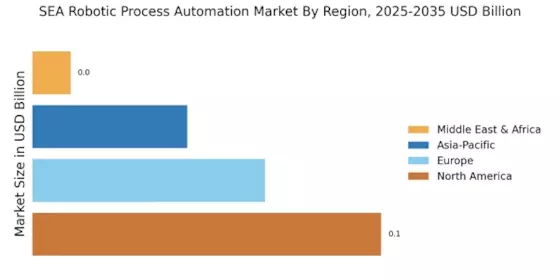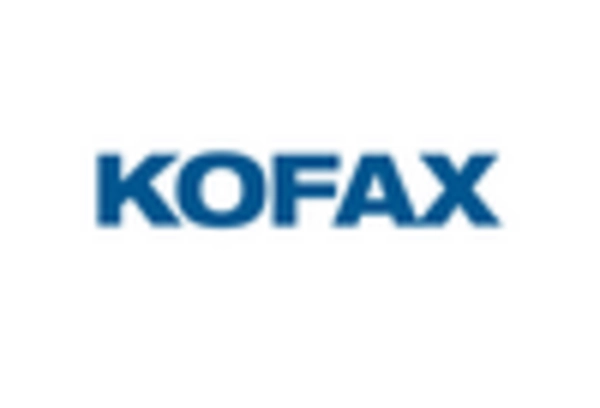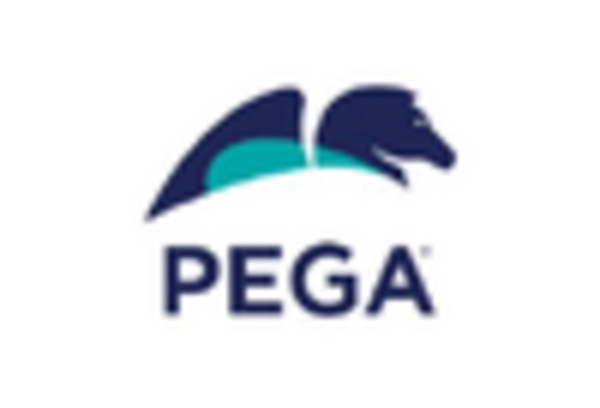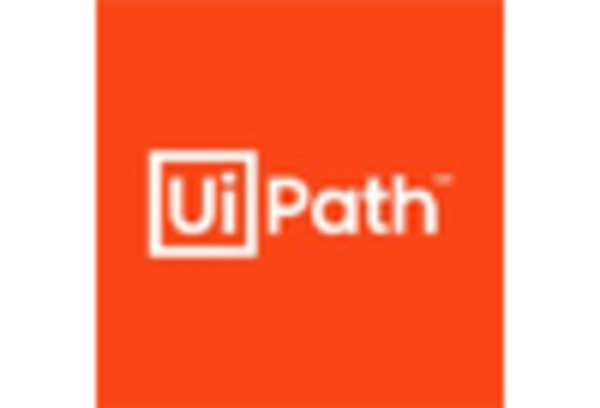Government Initiatives and Support
Government initiatives in the APAC region are playing a pivotal role in the growth of the Robotic Process Automation Market. Various governments are promoting digitalization and automation through favorable policies and funding programs. For example, Singapore's Smart Nation initiative encourages businesses to adopt advanced technologies, including RPA, to enhance productivity and innovation. Additionally, the Australian government has introduced grants to support small and medium enterprises in implementing automation solutions. Such initiatives not only foster a conducive environment for RPA adoption but also stimulate economic growth by creating new job opportunities in technology-driven sectors.
Expansion of Cloud-Based RPA Solutions
The expansion of cloud-based RPA solutions is significantly influencing the APAC Robotic Process Automation Market. As businesses increasingly migrate to cloud environments, the demand for scalable and flexible RPA solutions is on the rise. Cloud-based RPA offers organizations the ability to deploy automation quickly and efficiently, without the need for extensive infrastructure investments. This trend is particularly evident in Southeast Asia, where companies are adopting cloud technologies to enhance agility and responsiveness. The integration of cloud RPA with other digital tools further enhances its appeal, allowing businesses to create comprehensive automation ecosystems that drive innovation and growth.
Increased Focus on Customer Experience
The APAC Robotic Process Automation Market is experiencing a heightened focus on customer experience, which is driving the adoption of RPA technologies. Organizations are recognizing the importance of delivering seamless and personalized customer interactions. RPA can automate customer service processes, such as handling inquiries and processing orders, thereby improving response times and service quality. For example, companies in the retail sector in China are implementing RPA to enhance their customer engagement strategies, resulting in a 25% increase in customer satisfaction scores. This emphasis on customer experience is likely to continue shaping the RPA landscape in the APAC region.
Growing Demand for Operational Efficiency
The APAC Robotic Process Automation Market is witnessing a surge in demand for operational efficiency across various sectors. Organizations are increasingly adopting RPA solutions to streamline processes, reduce operational costs, and enhance productivity. For instance, companies in the manufacturing sector are leveraging RPA to automate repetitive tasks, which has led to a reported 30% increase in efficiency. This trend is particularly pronounced in countries like India and China, where businesses are under pressure to optimize resources and improve service delivery. The growing emphasis on digital transformation initiatives further propels the adoption of RPA, as firms seek to remain competitive in a rapidly evolving market landscape.
Rising Need for Compliance and Risk Management
In the APAC Robotic Process Automation Market, the increasing need for compliance and risk management is driving the adoption of RPA solutions. Organizations are facing stringent regulatory requirements, particularly in sectors such as finance and healthcare. RPA can assist in ensuring compliance by automating data entry and reporting processes, thereby minimizing human error. For instance, financial institutions in Japan are utilizing RPA to automate compliance checks, which has resulted in a 40% reduction in compliance-related costs. This trend highlights the potential of RPA to not only enhance operational efficiency but also mitigate risks associated with regulatory non-compliance.


